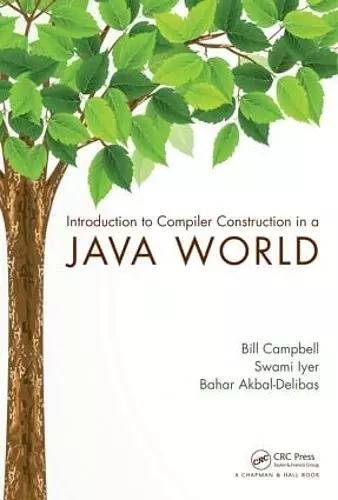Introduction to Compiler Construction in a Java World
Bill Campbell author Swami Iyer author Bahar Akbal-Delibas author
Format:Hardback
Publisher:Taylor & Francis Inc
Published:21st Nov '12
Currently unavailable, and unfortunately no date known when it will be back

Immersing students in Java and the Java Virtual Machine (JVM), Introduction to Compiler Construction in a Java World enables a deep understanding of the Java programming language and its implementation. The text focuses on design, organization, and testing, helping students learn good software engineering skills and become better programmers.
The book covers all of the standard compiler topics, including lexical analysis, parsing, abstract syntax trees, semantic analysis, code generation, and register allocation. The authors also demonstrate how JVM code can be translated to a register machine, specifically the MIPS architecture. In addition, they discuss recent strategies, such as just-in-time compiling and hotspot compiling, and present an overview of leading commercial compilers. Each chapter includes a mix of written exercises and programming projects.
By working with and extending a real, functional compiler, students develop a hands-on appreciation of how compilers work, how to write compilers, and how the Java language behaves. They also get invaluable practice working with a non-trivial Java program of more than 30,000 lines of code. Fully documented Java code for the compiler is accessible at http://www.cs.umb.edu/j--/
"… a strong contribution to the … covers most standard compiler construction techniques well, and does a good job of exposing students to actual implementation environments. … Highly recommended. Upper-division undergraduates and above.
—C. Vickery, Queens College of CUNY in CHOICE Magazine
"… an excellent book to use for individual study or in an upper-level undergraduate or first-year graduate course. No previous background in the theory of computation is needed, but a solid Java background is essential and some previous experience with programming languages (scope, stack allocation, types, and so on) would be useful. Knowledge of assembly language programming will be helpful if the course will include the chapters on register allocation and translating to MIPS."
—Computing Reviews, March 2014
ISBN: 9781439860885
Dimensions: unknown
Weight: 861g
382 pages